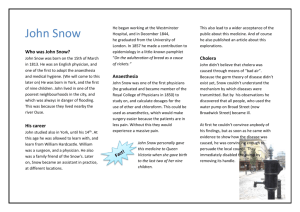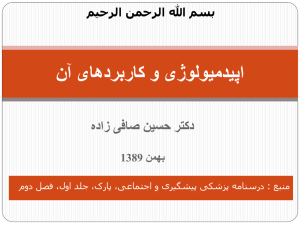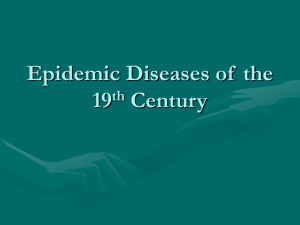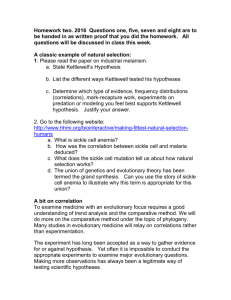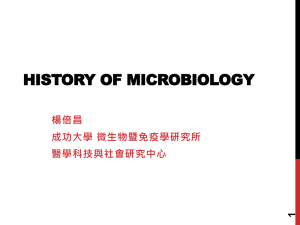Chapter 9 Exercise - Mapping cholera
advertisement
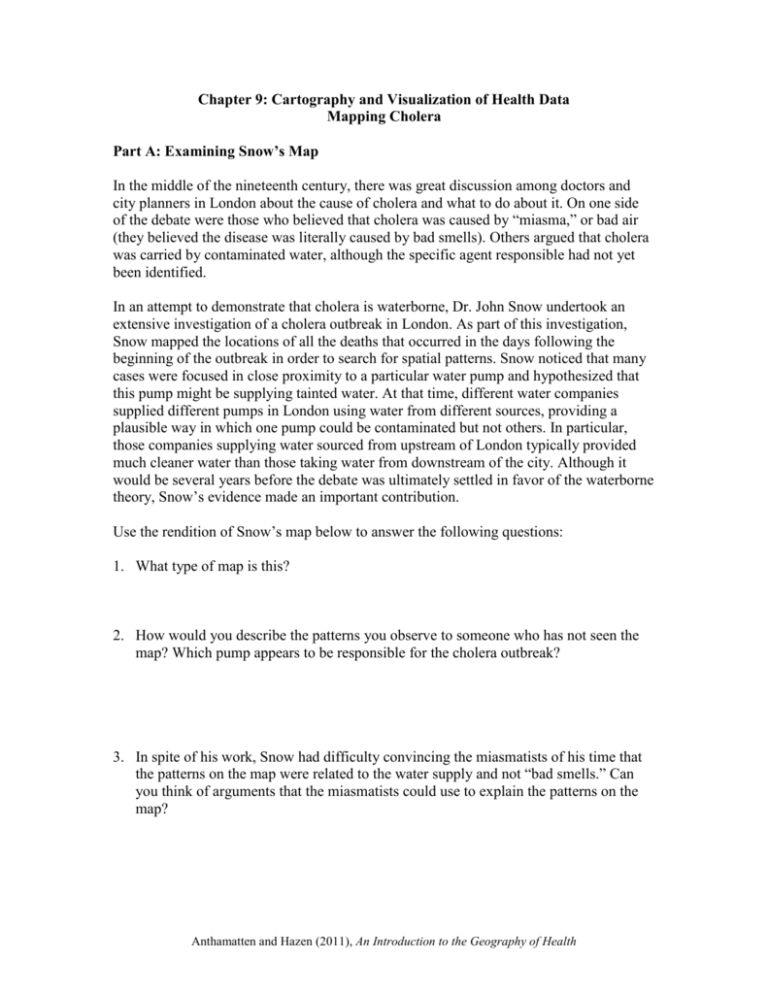
Chapter 9: Cartography and Visualization of Health Data Mapping Cholera Part A: Examining Snow’s Map In the middle of the nineteenth century, there was great discussion among doctors and city planners in London about the cause of cholera and what to do about it. On one side of the debate were those who believed that cholera was caused by “miasma,” or bad air (they believed the disease was literally caused by bad smells). Others argued that cholera was carried by contaminated water, although the specific agent responsible had not yet been identified. In an attempt to demonstrate that cholera is waterborne, Dr. John Snow undertook an extensive investigation of a cholera outbreak in London. As part of this investigation, Snow mapped the locations of all the deaths that occurred in the days following the beginning of the outbreak in order to search for spatial patterns. Snow noticed that many cases were focused in close proximity to a particular water pump and hypothesized that this pump might be supplying tainted water. At that time, different water companies supplied different pumps in London using water from different sources, providing a plausible way in which one pump could be contaminated but not others. In particular, those companies supplying water sourced from upstream of London typically provided much cleaner water than those taking water from downstream of the city. Although it would be several years before the debate was ultimately settled in favor of the waterborne theory, Snow’s evidence made an important contribution. Use the rendition of Snow’s map below to answer the following questions: 1. What type of map is this? 2. How would you describe the patterns you observe to someone who has not seen the map? Which pump appears to be responsible for the cholera outbreak? 3. In spite of his work, Snow had difficulty convincing the miasmatists of his time that the patterns on the map were related to the water supply and not “bad smells.” Can you think of arguments that the miasmatists could use to explain the patterns on the map? Anthamatten and Hazen (2011), An Introduction to the Geography of Health 4. Is there other information you would like to see on the map or other ways you could envisage mapping the data that might strengthen Snow’s argument? Part B: Aggregating Snow’s Cholera Data When Snow produced his maps, there was little or no concern about the rights of individuals to the privacy of their health information. Today, this map would probably not be considered ethical and would be extremely difficult to produce in a timely manner. As Snow mapped individuals with cholera to particular addresses, anybody who knew the area could have identified specific households infected with cholera, potentially leading to stigma and ostracism. One technique to protect individuals’ health information is to aggregate data—to combine data from many people so that individual information is not revealed on the maps. Health data are now often reported for administrative areas, such as provinces or health service areas. How the data are aggregated can profoundly affect the map’s message, however. One particular problem is the modifiable areal unit problem (MAUP). Use maps A through D to produce four basic choropleth maps that illustrate different units of aggregation. For each map, count the number of cases that fall within each boundary and then shade the maps according to the categories provided in the legend. Remember, the map will be most effective if you use just one color, with the category with the most cases shaded darkest and the category with the fewest cases shaded lightest. Make sure that you fill in the legend. Map A shows an arbitrary grid imposed over the area. Maps B and C show different ways in which the area could be divided into neighborhoods. Map D shows Thiessen polygons around the water pumps. Thiessen polygons are designed to delimit the area that is closer to a particular point than all other points depicted on the map. In this case, the points are pumps and so each polygon shows the area that is closest to one particular pump. Examine the maps that you have made and consider how each of them tells a different story. Anthamatten and Hazen (2011), An Introduction to the Geography of Health 1. How did the patterns change by how the data were aggregated? Which map(s) do you think would do the best job of communicating the data to an audience of skeptical miasmatists? 2. Notice how different the patterns look on the two maps of different neighborhood schemes, both of which represent plausible ways in which a city area might be divided. The contrasting patterns are a manifestation of the MAUP. What can health researchers and mapmakers do about this problem? 3. These maps represent raw numbers of cases rather than rates. Why might this be a problem? What other data should be incorporated into these maps? 4. Map D shows Thiessen polygons, showing the area that is closer to a particular pump than all other pumps. Is using Cartesian distance—distance “as the crow flies” —a problem? How could a model of distance be improved? Anthamatten and Hazen (2011), An Introduction to the Geography of Health John Snow’s map of cholera deaths in London, 1854 Anthamatten and Hazen (2011), An Introduction to the Geography of Health Map A: Arbitrary Grid Anthamatten and Hazen (2011), An Introduction to the Geography of Health Map B: Neighborhoods, Version I Anthamatten and Hazen (2011), An Introduction to the Geography of Health Map C: Neighborhoods, Version II Anthamatten and Hazen (2011), An Introduction to the Geography of Health Map D: Thiessen Polygons Anthamatten and Hazen (2011), An Introduction to the Geography of Health

